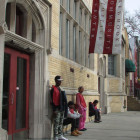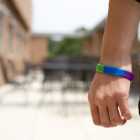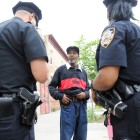
A Different Approach to Crime in a New York Neighborhood Is Working, Report Says
|
For young residents of Red Hook, N.Y. the chance to keep their record clean, or clear it, can make a world of difference in their future.
Juvenile Justice Information Exchange (https://jjie.org/tag/the-new-york-bureau/page/6/)

For young residents of Red Hook, N.Y. the chance to keep their record clean, or clear it, can make a world of difference in their future.

Alyssa Rodriguez, a male-to-female transgender teen, sued New York’s Office of Children and Family Services (OCFS) in 2006 over her treatment while in their custody.

Before June 2010, when Robert Stolarik visited the Brownsville Houses for an assignment to cover what was being touted as a new anti-crime policy implemented by the NYPD, he had never heard of Stop and Frisk.

JJIE announced Wednesday the expansion of its juvenile justice coverage through the opening of a metropolitan New York news bureau. Housed at the City University of New York Graduate School of Journalism, the new bureau is funded by a three-year, $255,000 grant from the Tow Foundation. The bureau will feature in-depth reporting from CUNY journalism students and will be run by journalist and adjunct professor Daryl Khan, who has written for The New York Times, Newsday and the Boston Globe. Leonard Witt, executive director of the Center for Sustainable Journalism, which publishes JJIE, said the addition of the New York Metro Bureau’s in-depth reporting fills a critical gap in juvenile justice coverage. “This gives us a presence in a major metropolitan region,” Witt said.

NEW YORK - Photographer Richard Ross can’t pin down the moment he found his calling. It could have been on the concrete floor of the Harrison County Juvenile Detention Center in Biloxi, Miss., where he sat photographing a 12-year-old inmate in a yellow prison jumpsuit as he gazed at graffiti of spaceships and aliens scribbled on the wall of his tiny, decrepit cell. Maybe it was the young inmates trying to sleep on the floor of the intake room of a Los Padrinos Juvenile Hall in Los Angeles. Or the facility for young female offenders in California where the administrator told him all 88 residents were victims of sexual abuse. It could have been his visit with Ronald Franklin, who ran away from home at 13 after his mother tried to kill him, got involved in an armed carjacking and ended up in a Miami juvenile detention center where he waited four years without a trial.

There’s a stretch of road in Newtown, Connecticut, 524 paces long. It leads from the official town Christmas tree at the corner of Riverside Drive and Washington Avenue up a hill and down again to a soft bend in the road at Dickinson Court where a sign hangs from a wooden post decorated with curling back wrought-ironwork that reads:
Sandy Hook School
1956
Visitors Welcome
There, next to a staging area for emergency workers and police investigators, sits a sprawling memorial to the 20 children shot and killed by a young man who was barely an adult himself. Law enforcement officials are still piecing together what happened that morning, but for now they say that Adam Lanza, 20, after killing his mother and armed with an assault rifle and some handguns shot and his way into the Sandy Hook School. He killed six staff, 20 children, and then himself. What used to be a nondescript road that connected the struggling heart of this small central Connecticut town to a municipal building has been transformed into an almost sacred path divided by a long line of orange emergency cones.